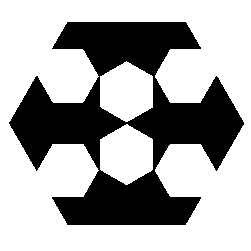A Python library to create fully defined orthodontic photographs in DICOM.
Explore the docs »
View Demo
·
Report Bug
·
Request Feature
- About The Project
- Getting Started
- Usage
- Known Issues
- Roadmap
- Contributing
- License
- Contact
- Acknowledgements
The DICOM standard is ready for any developer in the orthodontic community to implement. However, it can be complicated and implementation can be time consuming. We want to create a proof of concept to demonstrate how to properly store orthodontic visible light images (aka photographs) using DICOM, while ensuring all codes (necessary to uniquely identify each image type) are in the proper place.
Here's why:
- Your time should be focused on creating something amazing.
- Being able to import and export DICOM images to and from your orthodontic software will open doors to you and the orthodontic provider.
- No one software will serve all orthodontic providers completely. Adding interoperability will allow your product to integrate with others, giving additional value to your solution.
You may suggest changes by forking this repo and creating a pull request or opening an issue. Thanks to all the people have have contributed to this project!
A list of commonly used resources that we find helpful are listed in the acknowledgements.
Like any other Python module, install the module and use it. There is a CLI interface as well.
- An installation of Python 3.10+.
- optional: dicom3tools
Install using pip by running:
$ pip install dicom4ortho
If you're a developer working on the project, you can install with dev dependencies:
$ pip install dicom4ortho[dev]
The project uses pyproject.toml for package configuration and build settings.
It's recommended to use a virtual environment for development:
$ python -m venv venv
$ source venv/bin/activate # On Windows use: venv\Scripts\activate
# Install the package in development mode
$ pip install -e .
# To install with development dependencies
$ pip install -e ".[dev]"
To build the package from source:
$ python -m build
This will create distribution packages in the dist/ directory.
To run all tests in the project:
$ pytest
To run tests with coverage report:
$ pytest --cov=dicom4ortho tests/
To run a specific test file:
$ pytest test/test_cli.py
All tests are located in the test/ directory and can be executed after installing the development dependencies.
Some tests require Docker to run integration tests with an Orthanc DICOM server.
A docker-compose file is provided in the test/ directory.
If you're not using the Makefile, you can manually manage the Docker containers:
$ docker compose -f ./test/docker-compose.yml up -d
$ # Run your tests...
$ docker compose -f ./test/docker-compose.yml down
Make sure Docker is installed and running before executing integration tests.
The project includes a Makefile that simplifies common development tasks:
$ make test # Run all tests (automatically handles Docker)
$ make clean # Clean build artifacts
$ make build # Build the package (includes linting and testing)
$ make lint # Run linter on the code
$ make all # Clean and build
$ make install-dev # Install development tools including dicom3tools
$ make update_resources # Update resource files from source
$ make deploy # Deploy to PyPI
The Makefile handles Docker for you when running tests. It starts the required Docker containers before running tests and shuts them down afterward.
The dicom3tools are used to validate and is only used when the --validate
option is used. This is just a conveninece wrapper for debugging, and it's
installation is not necessary for normal operation.
The dicom3tools can be installed from compiled binaries, which are available for macOS and Windows.
Once installed, point DICOM3TOOLS_PATH in config.py to the installation
of the dicom3tools.
The official documentation of this project is available on line
here. Source code for the
documentation is in this repository under the gh-pages branch.
The DICOM images require a lot of information which is not contained in a flat PNG or JPEG image. This information would, in a production environment, usually come from the practice management software, or photo management software.
The easiest way to feed this information to dicom4ortho's CLI is using a
CSV file. You can find an example CSV file here
Once installed, if necessary, start the virtual environment:
pipenv shell
then use dicom4ortho like this:
$ dicom4ortho <filename>
Where filename should be a .csv file. Passing a single image file with
metadata through arguments is planned for future implementations.
generate a new UID for DICOM usage with this root:
$ d4o_generate
Please check the Implementation Status document.
See the open issues for a list of proposed features (and known issues).
Contributions are what make the open source community such an amazing place to be learn, inspire, and create. Any contributions you make are greatly appreciated.
- Fork the Project
- Create your Feature Branch (
git checkout -b feature/AmazingFeature) - Commit your Changes (
git commit -m 'Add some AmazingFeature') - Push to the Branch (
git push origin feature/AmazingFeature) - Open a Pull Request
Distributed under the MIT License. See LICENSE for more information.
Toni Magni- @zgypa - open-ortho@afm.co
Project Link: https://github.com/open-ortho/dicom4ortho






